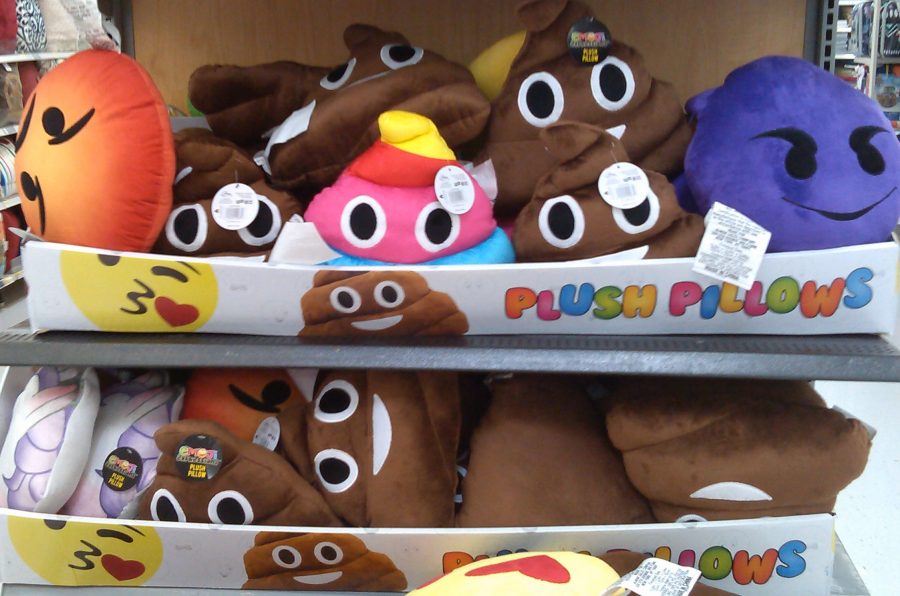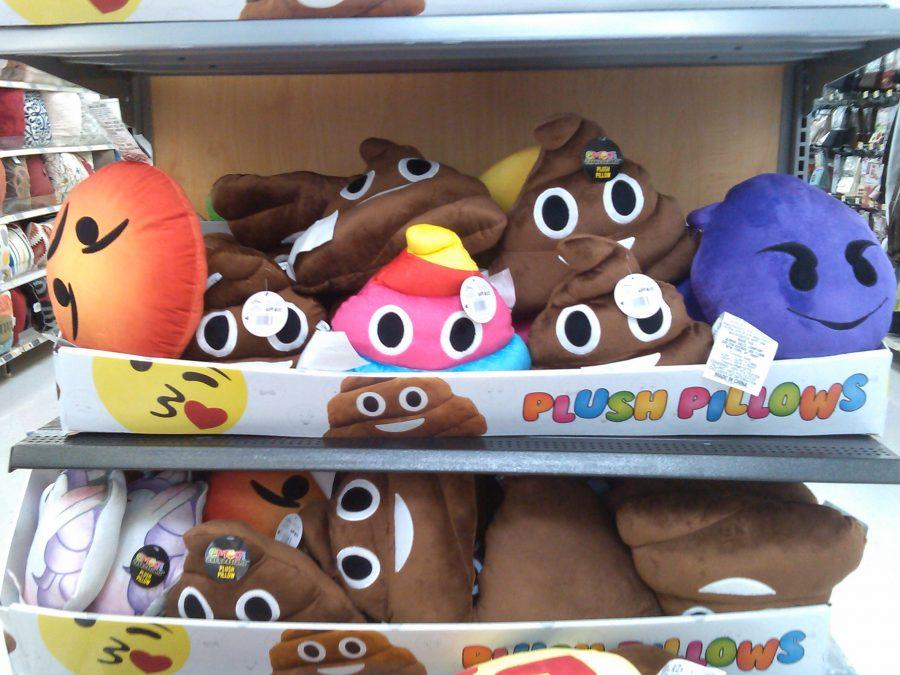Emoji Mania
More emojis (Photo By: Laura Nicolescu)
October 27, 2016
Story of the Year – Second Place (Editorials/Opinion)
They’re everywhere you look. There’s no escape.
The emojis. They’re taking over the world.
Smiling. Crying. Grimacing.
Anger. Suprise. Sadness.
And yes, poop. The truly accurate representation of our days.
While some may mistaken the smiling brown swirl for ice cream, there’s no hiding that it represents, in fact, a product of the excretory system.
But no need to get too much into that.
It’s on our heads as a fashionable hat. On our pillows. On our blankets.
Surrounding us. Engulfing us. We’re drowning in it.
This is what our society has come to. Making money off of smiley faces that somehow evolved from the colon and end parenthesis to every expression imaginable. And of course, poop.
These little images include nearly every household and outdoor item, and a few controversial items including guns, bombs, pills, and an injection needle, which begs the question of who uses these things?
And specifically for the drug/murder emojis, why?
The emoji was born when typographic displays of a facial representations — you know, emoticons 🙂 — evolved into full-fledged graphic pictorial representations. They were created in the late 1990s by NTT DoCoMo, a Japanese communications firm and are regulated by the Unicode Consortium, a nonprofit corporation that standardizes software and the representation of text internationally.
But who has the time—and energy—and brain cells—to sort through the hundreds of emojis to find the one that perfectly represents their mood at the moment?
Apparently, the world. According to research from eMarketer, there are two billion smartphone users worldwide. On those devices, 41.5 billion messages and six billion emojis are sent around the world every day on mobile messaging apps, according to branded digital startup Swyft Media. Overall, happy faces were the most popular category across all regions, comprising nearly 45 percent of emojis sent. Sad faces were the second-most popular emoji category, followed by hearts.
And while we may think emojis are “things of the future,” we’re actually going back in time. We’re going back to writing in hieroglyphics like in the caveman days, back when people didn’t talk, just grunt, and speak to each other in symbols.
Sound familiar?
In fact, emojis are even replacing text slang, such as “lol.”
How much further can we go?
We’ve stopped saying “I love you” and instead resort to the impersonal heart emoticon—bonus, there’s lots of colors to choose from!
What does a green heart mean? A yellow one? Even a red one?
Nothing. It means we no longer know how to carry on a conversation and express our feelings and emotions through words and letters.
You know, the things that appear on this page.
Back in the days, we used to be romantic. Show up to the house of our significant others and give them roses or candy or just say I love you.
And now, <3. Love you too.
From poop to drugs to love, there’s something for everyone. A distant, cold misnomer that is called an emoticon, when it represents the opposite of emotion.
We use these things cause they’re “cute” and really represent how we feel.
But do they really?
Emojis do nothing more besides deepen the gap we have with each other, and further decrease our conversation skills and our abilities to express emotions. After all, that’s what distinguishes humans as the superior race.
And now, we’re choosing to go back to a time where this skill was still developing, “dumbing down” our evolution and decreasing our ability to talk and understand each other, in a time when some of us need it most (cough, our clowns running for president presidential candidates).
So next time your day feels like poop, try “I’ve had a terrible day, how was yours?” Or if that’s even a stretch, try “My day was horrible. Urs?”
Just don’t isolate yourself and hide behind little pictures.
Communicate. Share. Enjoy what makes us human.
Look up from your phone.
And live.




